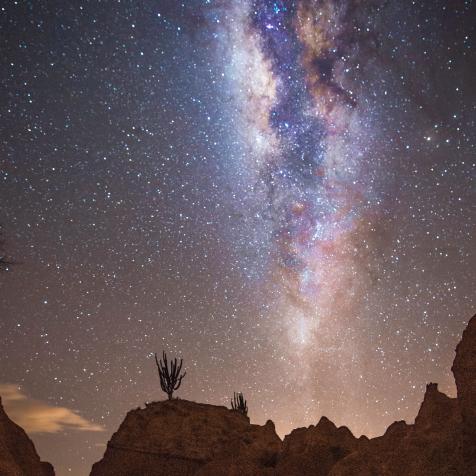
Shutterstock
There's a Secret Room Behind Mount Rushmore Meant for Future Civilizations
This hidden room within the mountain was designed for the future.
Each year, nearly three million people visit South Dakota's Black Hills to get a glimpse of Mount Rushmore, where the carved busts of four American presidents stand six stories tall. As grandiose as the monument is today, its original vision was even more so. There's no better evidence for that than the fact that the monument's equally grandiose artist began work on a hidden room within the mountain, designed to inform future civilizations about why the sculptures were there.

U.S. Park Service
Hard Headed
It should come as no surprise that the man who put massive heads in a mountain was larger than life himself. The Idaho-born son of a Danish immigrant, Gutzon Borglum had already earned quite a reputation by the time South Dakota's state historian approached him about carving a mountain in the Black Hills.
Rumor had it that an argument over the proper gender of the angels he had carved for the Cathedral of St. John the Divine in New York City led him to smash all of the statues in frustration (though cathedral officials maintain this wasn't the case). Likewise, a conflict with his funders during a commision to carve Robert E. Lee into the side of Georgia's Stone Mountain ended in his dismissal, after which he destroyed his models and had a warrant issued for his arrest. He was a proud man, and he wasn't about to let anyone dull his legacy.
So of course, as he started what would become a 14-year, $1 million project, his concerns drifted not to how he'd etch four 60-foot (18-meter) faces into a mountain, but how he and the rest of civilization would be remembered when they were gone. After all, we know hardly anything about the people who constructed Stonehenge. How could future civilizations — or even visiting extraterrestrials — appreciate our legacy without help?
"You might as well drop a letter into the world's postal service without an address or signature, as to send that carved mountain into history without identification," Borglum wrote. "Each succeeding civilization forgets its predecessor. Civilizations are ghouls." To make sure he was never forgotten, Borglum began work on a hidden room.

U.S. Park Service
Unfinished Business
Construction on Mount Rushmore began in 1927, and Borglum began his massive "Hall of Records" in 1938. Positioned just behind Abraham Lincoln's hairline, he envisioned this chamber housing all the information about the mountain and the country anyone would ever need, including historical artifacts such as the Constitution and the Bill of Rights. Visitors would climb an 800-foot (244-meter) rock staircase and gaze up through an 18-foot (5.5-meter) tall doorway at a gold-plated eagle stretching 38 feet (11.5 meters) wide. Unfortunately, the U.S. government didn't share his vision and demanded that he focus on the faces instead. Three years after he began work on the room, Borglum died, a few days shy of his 74th birthday. He never finished the faces, much less the room.
His son took up the reins and put the finishing touches on the monument over the next seven months, after which the government declared the project complete — leaving the room unfinished. But for decades, Borglum's family asked the government to complete the room as a tribute to their father. In 1998, the government finally installed several porcelain tablets laying out the history of the project, including words from Borglum himself: " ... let us place there, carved high, as close to heaven as we can, the words of our leaders, their faces, to show posterity what manner of men they were. Then breathe a prayer that these records will endure until the wind and rain alone shall wear them away."
The Hall of Records is still there, but hopeful visitors will have to be satisfied with photographic evidence. To this date, it's closed to the public.
This article first appeared on Curiosity.com.


















